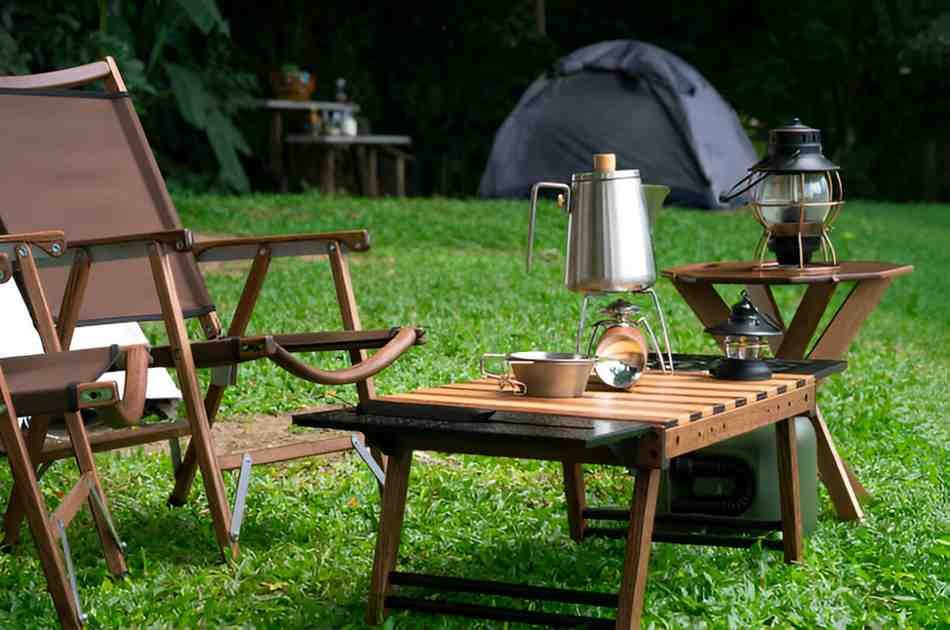When I first started camping, I quickly realized that one of the most crucial pieces of gear I would need was a portable camping stove. Whether you’re venturing into the wilderness for a weekend getaway or planning a more extended trip, the ability to cook your meals is essential for a comfortable and enjoyable experience. Over time, I’ve tested several portable camping stoves, learning the ins and outs of what makes a good one. In this guide, I’ll share my experiences and insights to help you choose the best portable camping stove for your next adventure.
Table of Contents
Why You Need a Portable Camping Stove
Before diving into the specifics of stove types and features, let me explain why a portable stove is so important when camping. Imagine spending a day hiking in the mountains or exploring the woods, only to return to camp hungry and tired. Having a reliable stove to quickly prepare a warm meal can make all the difference. It not only saves time but also gives you more energy for the rest of your trip.
A camping stove provides a level of convenience that cooking over an open fire just can’t match. While fires can take a while to build, and some campsites prohibit open flames for safety reasons, a portable stove offers control over heat and cooking time, allowing you to prepare your meals with ease.
Types of Portable Camping Stoves
Camping stoves come in various types, each suited to different needs and preferences. Let’s take a look at the main types I’ve encountered:
1. Canister Stoves
Canister stoves are among the most popular for their portability and ease of use. These stoves use pre-filled gas canisters, typically containing butane or a butane/propane mix. They’re compact, lightweight, and perfect for solo campers or small groups.
- Pros: Easy to use, fast boiling times, lightweight, convenient.
- Cons: Canisters may be difficult to find in remote areas, limited fuel for extended trips.
2. Liquid Fuel Stoves
These stoves are powered by liquid fuels like white gas, kerosene, or unleaded gasoline. They offer more flexibility in terms of fuel availability, making them suitable for extended trips or remote locations where canisters are hard to find.
- Pros: More fuel options, ideal for long trips, reliable in cold weather.
- Cons: Heavier and bulkier, require maintenance, more difficult to use.
3. Alcohol Stoves
Alcohol stoves burn denatured alcohol or other alcohol-based fuels. They’re extremely lightweight and often used by ultralight campers who prioritize minimizing weight.
- Pros: Lightweight, easy to use, simple design.
- Cons: Slower boiling times, less fuel efficiency, limited control over heat.
4. Wood-Burning Stoves
Wood-burning stoves are powered by natural materials like sticks, leaves, or twigs. These are perfect for campers who want to reduce their reliance on fuel canisters or liquid fuels. They’re also great for those who enjoy the experience of gathering firewood as part of their camping adventure.
- Pros: Fuel is free and abundant, eco-friendly.
- Cons: Dependent on weather conditions, requires effort to gather wood, slower cooking times.
5. Multi-Fuel Stoves
As the name suggests, multi-fuel stoves can burn different types of fuel, including canisters, liquid fuels, and even wood. These stoves are highly versatile and ideal for campers who want flexibility, especially when traveling through diverse environments.
- Pros: Versatile, ideal for unpredictable situations.
- Cons: Can be heavy and complex to use.
Key Features to Consider When Choosing a Portable Camping Stove
There are several factors that can make or break your camping stove experience. Over the years, I’ve come to appreciate certain features that I now consider essential when shopping for a stove.
1. Weight and Size
When you’re camping, every ounce counts, especially if you’re backpacking. The stove should be light enough to carry without taking up too much space in your pack. Canister stoves are often the lightest, while liquid fuel and multi-fuel stoves tend to be bulkier.
2. Boiling Time
You want a stove that boils water quickly, especially when you’re hungry after a long day of hiking. The time it takes for your stove to bring water to a boil is an essential factor for me when choosing a stove.
3. Fuel Efficiency
Efficient fuel usage means you won’t need to carry excessive amounts of fuel with you. Fuel efficiency becomes even more important when you’re planning longer trips. Alcohol and wood-burning stoves tend to be less fuel-efficient than canister or liquid fuel stoves.
4. Temperature Control
Being able to adjust the flame is important, especially when cooking more complex meals. A stove with adjustable heat settings allows you to simmer your food without burning it.
5. Durability
Your stove should withstand harsh conditions, whether it’s extreme heat, cold, or rain. A durable stove is crucial for ensuring that it functions properly throughout your trip.
6. Wind Resistance
Camping often involves cooking in less-than-ideal conditions. Wind can make cooking over a stove frustrating, so I’ve learned to look for stoves that feature wind shields or shields that can be added.
7. Ease of Use and Cleaning
A stove that’s easy to set up, use, and clean is always a priority. When you’re in the wilderness, you don’t want to spend too much time fiddling with your stove.
Comparison of Popular Portable Camping Stoves
Here’s a comparison of some of the top-rated portable camping stoves, based on my experiences and research. I’ve categorized them according to their fuel type, weight, and suitability for different types of camping.
| Stove Model | Fuel Type | Weight (oz) | Boil Time (min) | Ease of Use | Ideal for |
|---|---|---|---|---|---|
| MSR PocketRocket 2 | Canister | 2.6 | 3 | Easy | Solo or small groups |
| Jetboil Flash | Canister | 12 | 4 | Very Easy | Quick meals, backpackers |
| Coleman Peak 1 | Liquid Fuel | 8.5 | 5 | Moderate | Extended trips, versatility |
| Soto Amicus | Canister | 3.2 | 4 | Easy | Lightweight, simple setup |
| Trangia 27-1 UL | Alcohol | 6.7 | 10 | Moderate | Ultralight hikers |
| Solo Stove Lite | Wood | 9.2 | 7 | Easy | Eco-conscious campers |
| MSR WhisperLite International | Multi-Fuel | 14.5 | 5 | Moderate | Multi-fuel flexibility, reliability |
How to Choose the Right Stove for Your Trip
Choosing the right camping stove ultimately comes down to your specific needs. Here’s how I would recommend approaching the decision:
1. For Solo Travelers or Backpackers
If you’re traveling solo or backpacking, you’ll want a stove that’s lightweight and compact. A canister stove like the MSR PocketRocket 2 or Jetboil Flash would be a good fit. These stoves are fast and easy to use, and they don’t take up much space in your pack.
2. For Group Camping
For group camping, a larger stove might be more appropriate. You’ll want something that can handle multiple pots or provide enough heat for cooking larger meals. Coleman’s Peak 1 or a multi-burner stove would be ideal for group cooking, and it also offers reliable performance.
3. For Long-Term Camping
If you’re planning a longer trip and anticipate being in remote areas, I would recommend opting for a liquid fuel stove or multi-fuel stove. The MSR WhisperLite and Coleman’s dual-fuel options will give you peace of mind knowing you have flexible fuel options.
4. For Ultralight Adventures
If minimizing weight is your top priority, an alcohol stove like the Trangia 27-1 UL or a wood-burning stove like the Solo Stove Lite might be your best choice. These stoves are simple, lightweight, and compact, perfect for ultralight hikers.
Maintenance Tips for Portable Camping Stoves
I’ve learned over time that maintaining your stove is just as important as choosing the right one. Here are some tips to keep your stove running smoothly:
- Clean the Stove After Each Use: Clean the burner and fuel lines to ensure no food or debris gets clogged.
- Check for Leaks: Inspect fuel lines and connections for leaks before each trip.
- Use Fuel Properly: Store and handle fuel according to the manufacturer’s guidelines. Never overfill the fuel tank, and always store it in a cool, dry place.
- Inspect for Damage: After each use, make sure there are no cracks or signs of wear and tear.
Final Thoughts
Choosing the best portable camping stove is about finding the right balance between weight, fuel type, cooking capacity, and ease of use. After years of trial and error, I’ve found that understanding the specifics of what each stove offers has helped me make smarter decisions when planning my trips. Whether you’re cooking a simple cup of coffee or a full dinner in the wilderness, the right stove will make your experience much more enjoyable.
Remember, there is no one-size-fits-all answer. Consider your trip’s length, terrain, and personal preferences to choose a stove that fits your needs best. Ultimately, the stove that works best for you will be the one that enhances your camping experience, allowing you to focus more on enjoying nature and less on how you’re going to cook your next meal.





